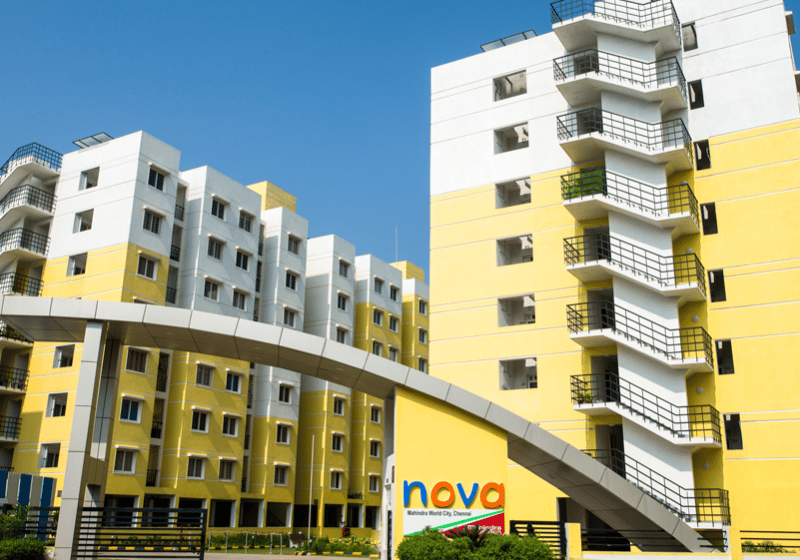PAPL and AIQ India director details one of the industry’s current transformations.
India’s vertical-transportation (VT) industry is undergoing a transformation from a protected environment to one of open trade and global competition. Despite progressive liberalization of policies over the last decade, the sector’s performance has not been in proportion to its potential. In the context of mergers and acquisitions (M&As), today’s VT industry has the potential but is not in a position to turn this potential into reality. Key and timely decisions need to be taken to set it on the path to local and global growth and competitiveness. The need of the hour is to enable radical and discontinuous growth to bring India on par with other key developing and even developed economies.
M&As are the acts of consolidating companies or assets, with an eye toward stimulating growth, gaining competitive advantages, increasing segment of share (SoS) and influencing supply chains. However, M&As in the VT industry are different from those in other industries. Our industry is made up of hundreds, if not thousands, of small elevator companies that operate locally, and every building owner is a different customer.
Acquisitions can typically be classified into two segments. First, in “small to medium,” assets ideally getting purchased. This is essentially the acquisition of maintenance contracts. Second, in “larger to stand-alone” business acquisitions, there are equity purchases or strategic joint ventures. The latter cases often involve:
- Creating a second brand for capturing markets that demand lower cost
- Creating an alternative brand to cater to a niche market for certain geographies or equipment needs and to increase SoS
Value Creation Motivators for M&As
An interesting feature of M&A activity is that it occurs in boom-and-bust times. Much of this activity takes place when a company, to obtain the economic benefits of industry consolidation, starts buying its competitors. Important value creation motivators for M&As in the VT industry for big companies are:
- Opportunistic acquisition of independent service providers (ISPs): Here, the acquiring company believes the people and service portfolio of the targeted ISP are good fits and complementary to its own.
- Second brand strategy (tier-II brand): The acquired brand is targeted at a more price-sensitive market and for an SoS increase. Here, second-brand customers are loyal to the brand, which is their strength.
- Specialization in the entry-level elevator market
Important value creation motivators for M&As in the VT industry for small and medium-sized companies are:
- Partnerships with big players
- The next generation of ownership not being interested in the industry
- Long accounts-receivable issues, working capital problems and future capital requirement to update with technology and resources
- Getting an attractive valuation from the buyer
Challenges
There are no straightforward M&A transactions in the VT industry. It is unlikely that the company being acquired will unhesitatingly share the comprehensive data from its side. Additionally, it will need time to build a rapport, despite signing a nondisclosure agreement. For our industry, the most frequent challenges here are as follows.
Difficultly in Creating a Proper Standalone Valuation
The business often looks strong, but when details are reviewed, such challenges as those below are found:
- Revenue being 80% of new elevator contracts and 20% from maintenance
- Low contracted service revenue per unit
- A high level of accounts receivable with no provisioning policy for accounts receivable deemed “doubtful”
- Costs of safety upgrades per unit: for example, purchase price plus upgrade cost is two to three times the annual service unit revenue
- Specific restrictions and warranties on intellectual property rights (including tooling), tax compliance and human-resources compliance: the purchasing company must have a sense of potential liability exposure it may have to inherent. Standard practice is to always cap the liquidated damages.
The need of the hour is to enable radical and discontinuous growth to bring India on par with other key developing and even developed economies.
- Often, the critical decision is made based on how much to invest on the product, factory, portfolio (safety and quality) of the company that will be acquired.
Integration
The biggest risk in an M&A is unsuccessful integration. If a merger underperforms, service contracts, revenue and customer goodwill take a hit. A clear sign the integration is not working as intended is the loss of service contracts.
Due Diligence
Sometimes, a lack of proper due diligence on related party relationships, non-compete and no-solicitation contracts and indemnification (settling any outstanding dues and liabilities arising prior to the transfer date) cause problems. Additionally, there may be issues if there are no employment contracts for many of the employees.
Guidelines
Guidelines to consider include M&A confidentiality. Specifically for our industry, consider starting a rationale with the key steps needed to effect M&As in different jurisdictions using a holistic and disciplined approach to both financial, legal and non-financial due diligence, which covers the risk factors and the important risk optimization.
The Indian VT industry has seized the opportunity and grown tremendously over the last five years; however, it is yet to realize its potential in the global market.
The acquisition process starts with leads generated from multiple sources. These include:
- The company’s local offices: the company can formally canvass its branches once or twice a year, soliciting names of companies that could fit into its long-term strategy.
- Cold calls from owners looking to sell
- Employees of companies in charge of M&As who report to their senior teams
If possible, all acquisitions should be completed in-house by a dedicated team of acquisitions professionals. Additionally, best practices start with the business model itself, which incorporates the legal side of acquisitions into the business side. In many companies, these are separated, leading to a significant disadvantage. When the business and legal sides are separated, lawyers may be boxed into less-than-favorable terms that are agreed to prior to their involvement in the transaction.
For other top ISPs, only the front end may be acquired. In this case, the seller will shut down the factory and acquisition approach and deal only for an asset-deal contract. Weekly post-acquisition meetings allow company leaders to track how well the integration is faring and, hopefully, tackle small problems before they become large ones.
The company’s attitude toward the people side in an M&A sets the foundation for seeing an M&A through to completion and integration. Here, actively engaging both sellers and employees is important. Before the merger closes, and the first day of work under the acquiring company banner begins, the company team should systematically instruct technicians and other staff in its “way,” which includes training in safety, communication and customer service. More practical matters, such as uniforms and business cards, should have already been accounted for. The acquiring company should make sure no one shows up to work without knowing exactly what to do.
For acquisitions of family-owned business, it must be ensured that:
- Family members will be placed in separate chains of command post-acquisition.
- Key employees enter non-compete agreements with the acquiring company, when allowed by law.
- Each family member enters non-compete agreements with a minimum duration of five years.
Priorities
Future M&A priorities in the VT industry will be based around intensifying global competition. Reduction in trade barriers and improvement in information technology and communication increasingly allow companies to source products and services from the cheapest and most efficient sources across the globe. The Indian VT industry has seized the opportunity and grown tremendously over the last five years; however, it is yet to realize its potential in the global market.
M&As should be considered a part of a business’ growth plan alongside its long-term growth strategy, willingness to reinvest in the company, focus on a single business and culture of innovation. Several key questions need to be reviewed:
- What are the key opportunities for the company in the market?
- What are the key features of acquiring the company?
- How can the M&A advantage be proactively leveraged?
- What are the policies required for installation at the acquired company, and how quickly and effectively can they be implemented?
The following should be done to build a strong M&A pipeline:
- Identify all the ISPs and midsized companies active in the market.
- Prioritize the approach by geography, owner age and business profile.
- Reach out to the addressable ISPs and midsized companies.
- Use M&A consultants.
- Engage interested targets in the M&A process.
- Decide on the integration model (merging into the acquiring company or keeping separate) based on:
- Company presence in the region via a branch
- Target brand awareness, reach and reputation
- Quality of business relationships between the target’s staff and customers
M&As should be considered a part of a business’ growth plan alongside its long-term growth strategy, willingness to reinvest in the company, focus on a single business and culture of innovation.
Conclusion
Three overarching principles applicable throughout the various phases and activities of the M&A process are process discipline, prudent decision-making and integrative leadership. An M&A requires a great deal of discipline to avoid costly mistakes. These include:
- Having each potential deal scrutinized by executives without direct interest in either making or breaking the deal
- Requiring board-level approval for deals of a certain size
- Insisting on careful comparisons with alternative forms such as alliances and entrepreneurship
- Sticking to the walkaway price, instead of fitting the investment thesis to the requirements of the sellers or negotiating away expected synergies in return for gaining sellers’ approval
- Establishing incentives for long-term success of acquisitions, rather than for closing the deal itself
Your author has seen in Europe that major elevator companies complete several acquisitions of independent elevator service companies every year. I am sure India’s VT industry will leapfrog to promote M&As and that they will grow here tremendously in coming years.
Get more of Elevator World. Sign up for our free e-newsletter.







